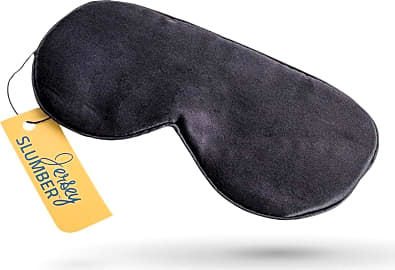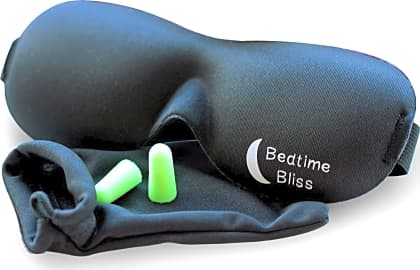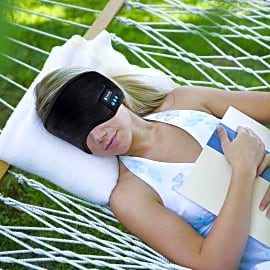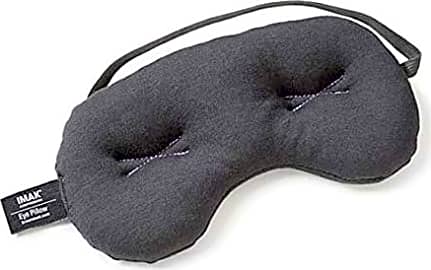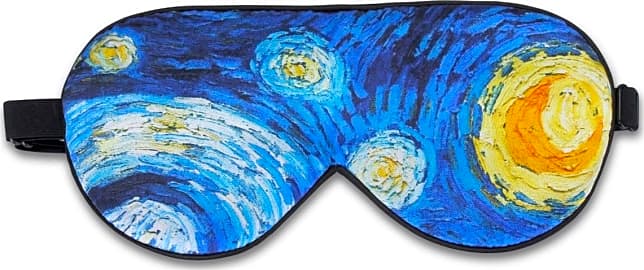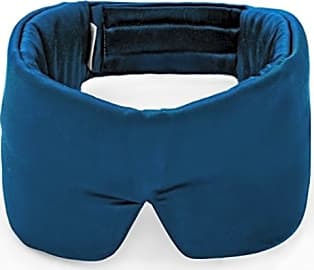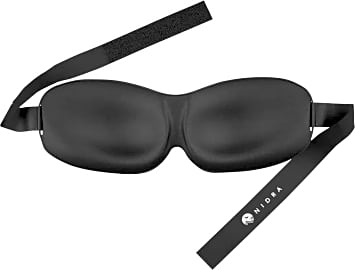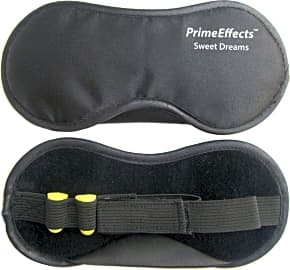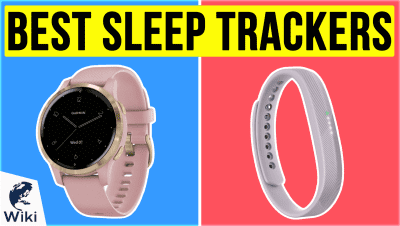The 10 Best Sleep Masks

This wiki has been updated 41 times since it was first published in February of 2015. There's nothing worse than not getting a good night's rest. Not only does it throw off your whole day, it's also bad for your health. Your brain only produces melatonin - an important hormone that helps us drift off - in response to darkness. If a street lamp, the rising Sun, or any source of light keeps you up, one of these sleep masks could help block out the nuisance and trigger REM cycles. When users buy our independently chosen editorial choices, we may earn commissions to help fund the Wiki.
Editor's Notes
April 14, 2020:
We know just how much light wants to get in and bother you while you're sleeping, so we made sure that our masks are designed to let you enjoy a dark environment, no matter what is going on around you. For that reason, we found the Manta Sleep Blackout very impressive, with its adjustable cups that form seals around the eyes, completely blocking out light, while still allowing you to blink comfortably. The Prime Effects SM007 also caught our attention, thanks to its smart nose flap that keeps light from sneaking in through this typically troublesome area.
More than just a lamp or the sun can disrupt a snoozer. Sounds and temperature fluctuations can also be an issue. So we like that the Brownmed IMAK is safe to put in the freezer, if you'd like some serious cooling action during hot summer months. The Dream Sleeper had to go as it becomes so hot during the night that it is uncomfortable and wakes users up - which is quite the opposite effect that we want from these masks. As for cutting out bothersome noises, the Joseche Wireless contains Bluetooth speakers to let you play calming music from your smartphone while you drift off, hopefully drowning out everything else.
Those who are concerned with the creases masks could leave on your face may like the Sipwell Jersey Slumber and the Alaska Bear Natural, which are made of wrinkle-fighting silk, and the Sleep Master smblu01, which is made of satin that can also minimize lines. Paired with a silk pillowcase, these accessories could help you wake up without a single indent on your visage.
Special Honors
Leatherology Eyemask With a full grain, soft leather surface, this sleep mask should withstand plenty of use and look good for years to come. It's available in 12 finishes, each of which either have a velour or microsuede lining that is very soft against the skin. An ergonomic shape, thick adjustable band, and nose flap add to this mask's comfort. leatherology.com
Purple + Gravity Weighted Sleep Mask This sleep mask brings new meaning to the saying "my eyes are heavy", with its half-pound of evenly-distributed beads that are meant to apply a calming amount of pressure to the eyes. However, if you don't like that sensation, you'll appreciate that the mask unzips and you can remove the filling. Its faux cashmere cover will feel cozy on your face and is hypoallergenic, so you shouldn't have adverse reactions. purple.com
How Sleep Masks Changed Sleep Itself
As our ancestors did not have the luxury of an alarm clock, the natural cycles of the earth were sufficient to tell the time.
The human body has adapted over thousands of years to be in perfect balance with the natural world. The industrial era changed that. The invention of the light bulb meant a room could be filled with daylight in the middle of night. Air conditioning could trick the body's natural responses to temperature. Processed foods entered the diet, altering the way the body digests and relates to food. The industrial era comprises such a small amount of human history that it is hard to believe our bodies have already adapted to meet the needs of industrialized society.
There is one way in which the human body has not adapted itself: the human body needs sleep. As our ancestors did not have the luxury of an alarm clock, the natural cycles of the earth were sufficient to tell the time. When the sun was out, the world was active. Naturally, so were early humans. When darkness fell and the world went quiet, the body slowed down and desired sleep. These natural light cues came to affect functions of the brain, and they still do.
In the modern era, the night is often anything but dark. Lights cast from televisions, computers, phones, and tablets all emit very blue tones. To the brain, this indicates that it is day. This confusion can cause problems when trying to sleep. In fact, research has found a greater number of sleep disturbances in people who were exposed to this blue light before or during the sleep cycle.
The sleep mask provides the perfect solution. Blue lights from televisions, computers, even alarm clocks are blocked out with a proper sleep mask. This keeps the body as close to its natural circadian rhythms as possible.
The Circadian Rhythms And Sleep
The human brain actually contains a biological clock. It is known as the suprachiasmatic nucleus, or simply the SCN. The structure itself is actually a pair of tiny brain structures containing around 20,000 neurons. The SCN rests in the hypothalamus, right where the optic nerves cross. As such, the functions of the SCN are directly affected by the eyes.
Melatonin is the hormone responsible for making people drowsy.
Any light that reaches the retina of the eye creates signals that travel along the optic nerve, coming into contact with the SCN. Signals from the SCN then travel to a number of different areas in the brain. In the pineal gland, the SCN sends signals to stop the production of melatonin as light hits the retina. Melatonin is the hormone responsible for making people drowsy. The SCN also uses this light to govern multiple functions of the shift between being asleep and awake. Functions such as urine creation in the kidneys, hormone secretion in the endocrine system, and changes in blood pressure and temperature in the circulatory system are all influenced by signals from the SCN.
The sensation of jet lag is actually a disruption of the circadian rhythms of the body. The body of a traveler flying from Los Angeles to London will think it has lost eight hours of time each day. This makes the traveler feel tired in the mornings, while wide awake at night. The sensation usually fades as the SCN readjusts to its new light cues.
People who sleep with lights in the room may actually disrupt the circadian rhythms and throw the body out of balance. Many people turn to sleep masks as a way to block out unwanted light and allow the brain to get back on track.
The Importance Of REM Sleep
In the average 8-hour sleep period, around two hours is spent in the rapid eye movement stage. Despite the limited time spent in REM, reaching this stage is vital. REM sleep is the most restorative part of the body's sleep cycle. During the REM stage, the body's muscles relax significantly and the eyes move rapidly in their sockets. The brain and body get energized during the REM stage of sleep, while the mind wanders into dreams. The purpose of this dreaming is uncertain, though some have theorized that dreams serve to help the sleeper sort out memories, stress, or subconscious messages.
In reality, the signal from the brain to the spine to turn off these motor functions is disabled, causing this abnormal motor control while dreaming.
The role of the REM sleep stage itself is unclear. Researchers theorize that REM is involved in the process of learning, storing memories, and balancing the mood. As the REM cycle begins, different signals are sent to the cerebral cortex in the brain, the area responsible for such things as organizing information, thinking, and learning.
Signals are then sent to the spine to shut off motor functions. This seems to play a role in keeping the sleeper safe. The lack of motor function is especially useful while lucid dreaming, as a movement in the body could easily jar the dreamer awake.
If a sleeper is running through a forest in the dream world, and they run into a wall in the real world, we would consider them a sleepwalker. In reality, the signal from the brain to the spine to turn off these motor functions is disabled, causing this abnormal motor control while dreaming. REM sleep also stimulates the areas of the brain responsible for learning. This would easily explain why young children spend more time in the REM stages of sleep than adults.


